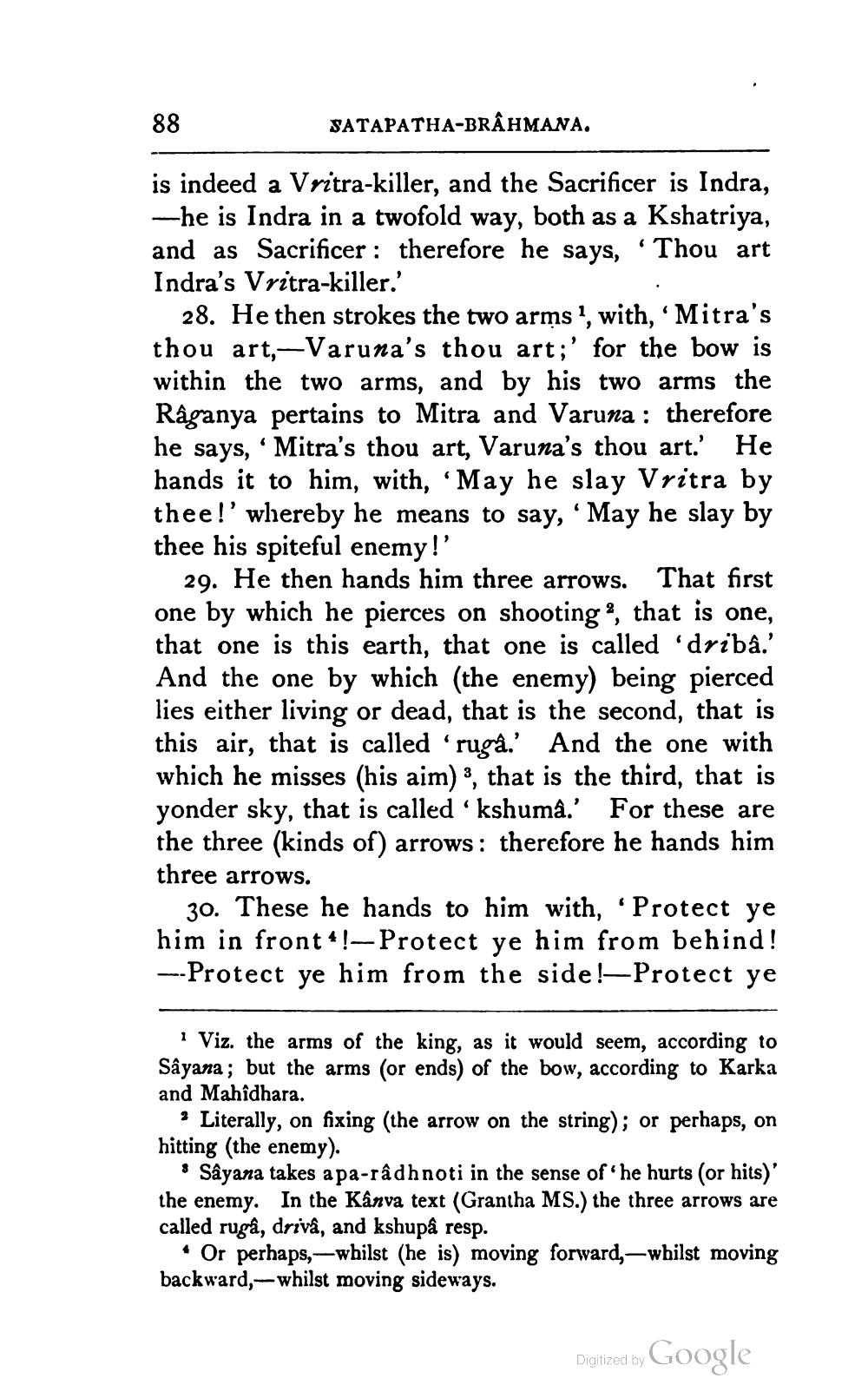________________
88
SATAPATHA-BRAHMANA.
is indeed a Vritra-killer, and the Sacrificer is Indra, -he is Indra in a twofold way, both as a Kshatriya, and as Sacrificer: therefore he says, 'Thou art Indra's Vritra-killer.'
28. He then strokes the two arms 1, with, 'Mitra's thou art, Varuna's thou art;' for the bow is within the two arms, and by his two arms the Raganya pertains to Mitra and Varuna: therefore he says, 'Mitra's thou art, Varuna's thou art.' He hands it to him, with, 'May he slay Vritra by thee!' whereby he means to say, 'May he slay by thee his spiteful enemy!'
29. He then hands him three arrows. That first one by which he pierces on shooting 2, that is one, that one is this earth, that one is called 'dribâ.' And the one by which (the enemy) being pierced lies either living or dead, that is the second, that is this air, that is called 'rugâ.' And the one with which he misses (his aim) 3, that is the third, that is yonder sky, that is called 'kshumâ.' For these are the three (kinds of) arrows: therefore he hands him three arrows.
30. These he hands to him with, 'Protect ye him in front!-Protect ye him from behind! --Protect ye him from the side!-Protect ye
1 Viz. the arms of the king, as it would seem, according to Sâyana; but the arms (or ends) of the bow, according to Karka and Mahîdhara.
* Literally, on fixing (the arrow on the string); or perhaps, on hitting (the enemy).
• Sâyana takes apa-râdhnoti in the sense of 'he hurts (or hits)' the enemy. In the Kânva text (Grantha MS.) the three arrows are called rugâ, drivâ, and kshupâ resp.
• Or perhaps, whilst (he is) moving forward,-whilst moving backward,-whilst moving sideways.
Digitized by
Google




